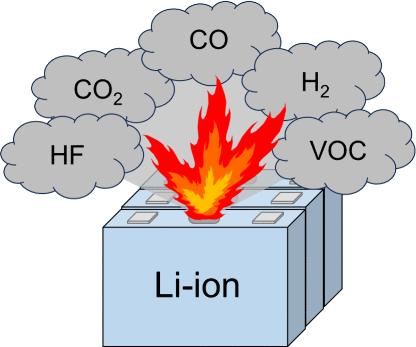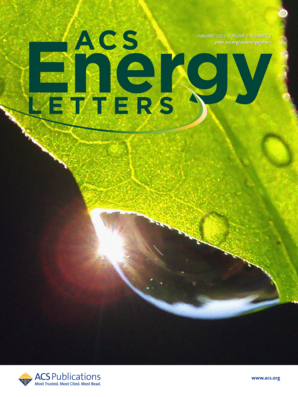评估锂离子电池、模块和电池的火灾和烟雾风险
IF 19.3
1区 材料科学
Q1 CHEMISTRY, PHYSICAL
引用次数: 0
摘要
该研究包括对 NMC 和 LFP 电池、模块和电池在热失控期间的火和烟成分进行表征,并确定在相同阴极化学成分下,从电池到模块再到电池配置时,释放的火和烟的大小和体积是否呈线性放大。热失控测试在环境和惰性环境中进行,以确定燃烧和不燃烧时气体释放的特性。在热失控过程中,试验品会起火、冒烟或同时起火、冒烟或同时冒烟。气体分析显示,碳氢化合物以及氢气和二氧化碳如果释放到外壳中,其累积量可能会超过气体混合物的可燃性下限(LFL)。火灾的性质和释放的烟雾量并不总是与电池数量的增加成线性关系,这表明必须在相关配置和环境中进行测试。充分了解释放到特定封闭空间中的气体有助于进行更安全的通风口和爆燃设计,并向急救人员和消防员发出气体预期性质的警告。本文章由计算机程序翻译,如有差异,请以英文原文为准。

Evaluating Fire and Smoke Risks with Lithium-Ion Cells, Modules, and Batteries
The study included characterization of the components of fire and smoke during thermal runaway for NMC and LFP cells, modules, and batteries and to determine if the size and volume of fire and smoke released scaleup linearly when one goes from the cell to module and then to a battery configuration for the same cathode chemistry. Thermal runaway tests were conducted in ambient as well as inert environments to characterize gas release with and without combustion. During thermal runaway, the test articles exhibited fire, smoke, or both. Gas analysis exhibited hydrocarbons as well as hydrogen and carbon dioxide that could accumulate above the lower flammability limit (LFL) of the gas mixture if released into an enclosure. The nature of fire and volume of smoke released do not always scale linearly with an increasing number of cells, showing that testing in the relevant configuration and environment is imperative. A good understanding of gases released into a certain enclosed space will help with safer vent and deflagration designs and provide a warning to first responders and firefighters of the expected nature of gases.
求助全文
通过发布文献求助,成功后即可免费获取论文全文。
去求助
来源期刊

ACS Energy Letters
Energy-Renewable Energy, Sustainability and the Environment
CiteScore
31.20
自引率
5.00%
发文量
469
审稿时长
1 months
期刊介绍:
ACS Energy Letters is a monthly journal that publishes papers reporting new scientific advances in energy research. The journal focuses on topics that are of interest to scientists working in the fundamental and applied sciences. Rapid publication is a central criterion for acceptance, and the journal is known for its quick publication times, with an average of 4-6 weeks from submission to web publication in As Soon As Publishable format.
ACS Energy Letters is ranked as the number one journal in the Web of Science Electrochemistry category. It also ranks within the top 10 journals for Physical Chemistry, Energy & Fuels, and Nanoscience & Nanotechnology.
The journal offers several types of articles, including Letters, Energy Express, Perspectives, Reviews, Editorials, Viewpoints and Energy Focus. Additionally, authors have the option to submit videos that summarize or support the information presented in a Perspective or Review article, which can be highlighted on the journal's website. ACS Energy Letters is abstracted and indexed in Chemical Abstracts Service/SciFinder, EBSCO-summon, PubMed, Web of Science, Scopus and Portico.
 求助内容:
求助内容: 应助结果提醒方式:
应助结果提醒方式:


